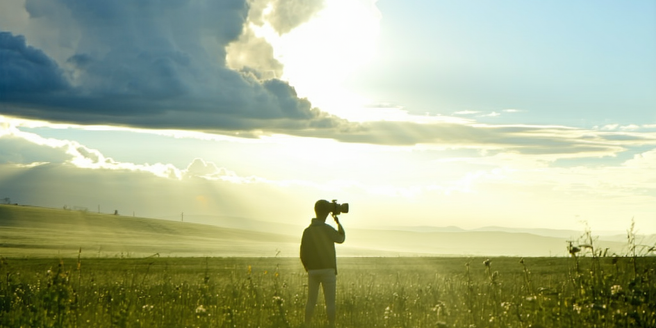
Understanding Weather Patterns: A Guide for Photographers
To capture magnificent images of weather phenomena, photographers must first grasp the intricacies of weather patterns. By studying meteorological data and recognizing signs of changes in the sky, one can anticipate dramatic scenes like storm formations or the play of light after rain. Understanding the behavior of clouds, the dynamics of wind, and the predictability of rain helps in planning the perfect moment to shoot. Mastering these elements requires both observation and practice. Photographers can leverage resources such as satellite images and weather apps to stay informed. Remember, timing is everything in capturing the essence of weather. With patience and knowledge, photographers can transform a bland landscape into a dynamic visual masterpiece.
Respecting Privacy and Land Ownership in Weather Photography
When pursuing the perfect weather shot, photographers must remain conscious of privacy and land ownership. Entering private properties without permission can lead to legal issues and disrespects the rights of landowners. Ethical photographers seek landowner consent and respect signage indicating private areas. It is important for photographers to conduct thorough research on the locations they wish to capture. Additionally, understanding local regulations and customs can prevent unintended offenses. Aerial or drone photography also demands consideration of airspace restrictions and privacy laws. Public spaces often allow more freedom, yet ethical guidelines remain crucial to ensure that people’s privacy is respected. By engaging openly with communities and respecting property boundaries, photographers can enjoy a respectful, rewarding experience.
Capturing Storms: Safety Tips for Ethical Shooting
Storm photography offers breathtaking opportunities but comes with inherent risks. Safety is paramount, and photographers should never prioritize a shot over personal well-being. Check weather updates frequently and maintain awareness of storm paths. Equip yourself with protective gear and ensure your vehicle is fueled and ready for swift relocation if needed. Remember to inform someone of your location and expected return time before setting out. It is also essential to keep emergency contact numbers handy in case of unexpected situations. Maintain a safe distance from active storm areas, lightning, and flood-prone zones. While capturing the intensity of a storm, always respect emergency protocols and the guidance of safety officials. With cautious planning, capturing the raw power of a storm can be done safely and ethically.
The Role of Technology in Ethical Weather Photography
Technology has revolutionized how photographers engage with weather photography ethically. High-resolution cameras, drones, and editing software expand creative possibilities while also demanding ethical consideration. As technology evolves, photographers must remain vigilant about how these tools impact the authenticity of their work. They need to constantly educate themselves on new technologies and their implications. While technology provides new opportunities, it also presents challenges in maintaining authenticity. Drone usage mandates adherence to aviation regulations and respect for others’ privacy. Remote sensors and real-time data from weather tech allow photographers to plan without disrupting environments. Post-editing tools should be used ethically, enhancing reality without misleading manipulation. Embrace technology as a tool to responsibly showcase the beauty and power of weather, balancing innovation with ethical practice.
Balancing Artistry and Responsibility in Weather Photography
The challenge of weather photography lies in harmonizing artistry with ethical responsibility. Photographers aim to capture nature’s beauty without exploiting it. Strive for authenticity in your work, respecting natural settings and wildlife. Avoid staging or altering scenes in ways that harm ecosystems. Engage with local communities to understand the cultural significance of certain weather events and landscapes. It is crucial to be mindful of seasonal patterns and vulnerable habitats that may be affected by your presence. Always consider the potential consequences of your actions on the environment. An ethical photographer is conscious of their environmental impact, seeking sustainable practices even in pursuit of creativity. By balancing these aspects, photographers can create compelling and responsible work that respects both artistry and the natural world.
